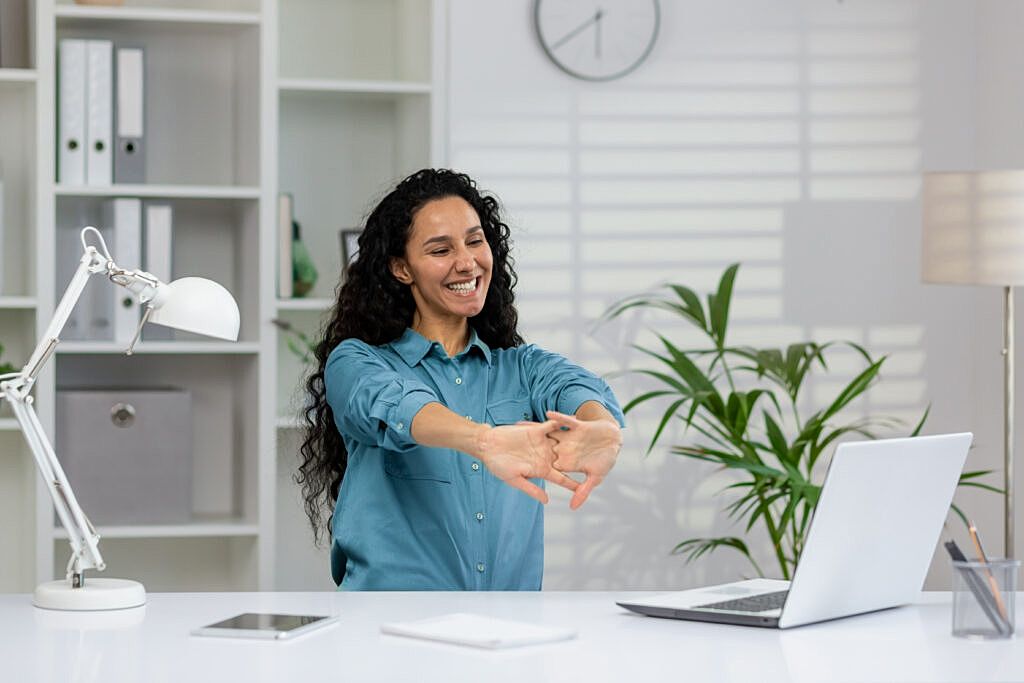
In today's digital age, many office workers spend hours hunched over computers, smartphones, and other devices, often unaware of the strain this is placing on their neck and spine. This repetitive strain, commonly referred to as tech neck, has become a growing concern among those with desk jobs. Characterized by neck pain, stiffness, and even headaches, tech neck can lead to long-term discomfort if not addressed. Fortunately, with the right exercises and ergonomic adjustments, you can relieve the symptoms and prevent tech neck from worsening. In this article, we'll explore simple and effective tech neck exercises that office workers can easily incorporate into their daily routines.
Tech neck, also known as text neck or forward head posture, is a common condition that arises from the repetitive strain on the neck caused by looking down at digital devices like smartphones, computers, and tablets. Office workers, in particular, are at risk of developing tech neck due to long hours spent in front of computer screens with poor posture.
The primary cause of tech neck in office workers is poor posture while sitting at a desk for extended periods. Leaning forward, hunching shoulders, or craning the neck to look at screens creates excess pressure on the spine. Over time, this leads to muscle imbalances, neck pain, and stiffness.
Symptoms of tech neck can range from mild discomfort to more severe pain. Common signs include:
Office workers are particularly susceptible to tech neck because of the sedentary nature of their jobs and the reliance on technology. Spending hours at a desk without proper ergonomic support or posture awareness can lead to chronic strain on the neck and spine.
Sitting for long periods can cause muscle fatigue and strain on the spinal discs, particularly when the neck is positioned improperly. When the head leans forward, it increases the load on the cervical spine, making the muscles work harder to support it.
Devices like smartphones, tablets, and laptops contribute to neck strain because they are often used at lower angles. This forces users to bend their necks to look down, further exacerbating the issue. Over time, this posture can lead to lasting problems if not addressed.
Incorporating tech neck exercises into your daily routine can significantly reduce pain and discomfort, improve posture, and prevent the condition from worsening. These exercises help stretch and strengthen the muscles that support the neck and spine, offering both immediate and long-term relief.
Tech neck exercises focus on correcting posture by realigning the spine and neck. Over time, consistent practice helps reduce the forward head position and encourages a neutral spine posture, which is essential for preventing strain.
Regularly performing targeted stretches and strengthening exercises can alleviate the tension built up in the neck and shoulders. This reduces the frequency of headaches, upper back pain, and muscle stiffness.
When neck pain is reduced, office workers often notice improvements in their overall well-being. With less discomfort, it becomes easier to focus on tasks, leading to higher productivity levels during the workday.

Here are seven easy exercises that can be done right at your desk to help relieve tech neck:
This exercise helps improve neck posture by strengthening the muscles at the back of the neck.
This stretch targets the sides of the neck and helps release tension.
This exercise strengthens the upper back and helps correct poor posture.
A simple spinal twist to relieve tension in the upper back and neck.
This stretch targets the muscles at the back of the neck.
This exercise stretches the chest and helps reduce the forward shoulder position.
This movement helps release tension in the spine and neck.
It can be challenging to fit exercises into a busy workday, but with proper time management and workspace adjustments, you can easily include tech neck exercises.
Set reminders on your phone or computer to take a break every hour. During these breaks, do a few stretches or exercises to relieve tension and reset your posture.
Ensure your desk and chair are set up in a way that promotes good posture. Keep your computer screen at eye level and use a chair that supports the natural curve of your spine.
Prevention is key to avoiding chronic tech neck. By making a few lifestyle changes and being mindful of your posture, you can prevent long-term damage.
Adjust your desk so your screen is at eye level, and keep your keyboard and mouse within easy reach to avoid hunching forward.
Standing up and walking around every 30 minutes can help prevent stiffness and reduce the risk of tech neck.
Be mindful of your posture while sitting, standing, and even walking. Regularly check your posture and make adjustments as needed.

At The Institute for Comprehensive Spine Care, Dr. Okubadejo and our team specialize in treating conditions like tech neck. If you're experiencing neck pain or discomfort, we offer personalized, non-surgical treatments designed to provide relief. Contact us today to schedule a consultation and take the first step toward a pain-free workday.
